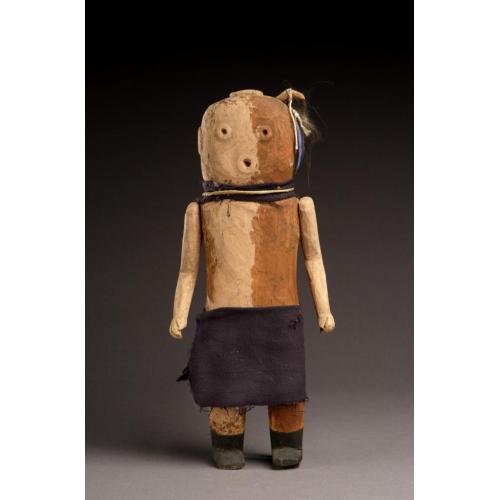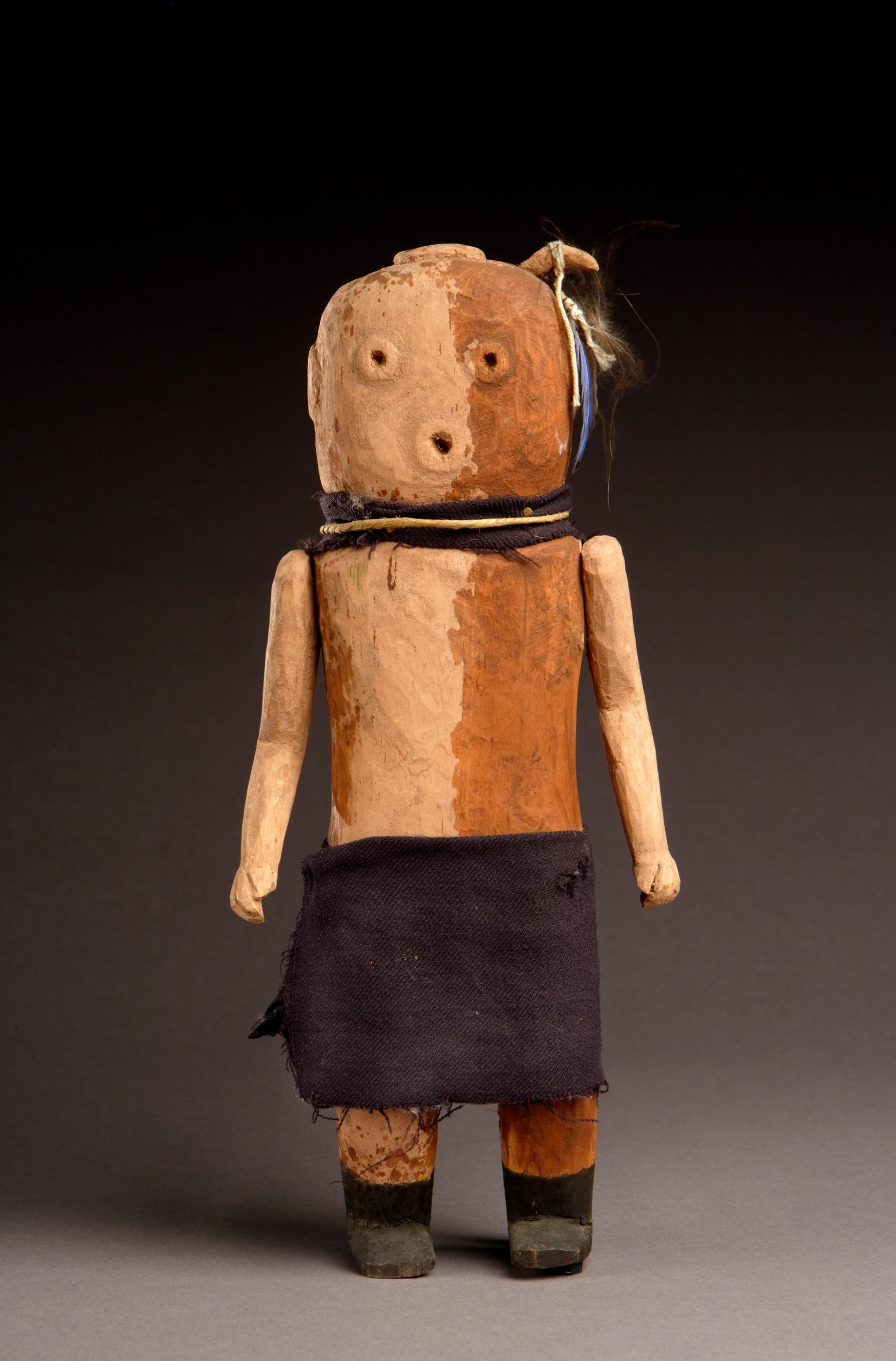
Photograph by Addison Doty. Copyright 2009 School for Advanced Research.
Koyemshi kokko we'ha | Koyemshi kokko figure
Date: before 1929
Artist or Maker: Unknown
Dimensions:
Overall: 29.2 cm (11 1/2 in.)
Medium: wood | paints | feathers | cotton | hemp? | cloth, unknown
Credit Line: Gift of Mary V. Conkey.
Place Made:
Zuni Pueblo, McKinley County, New Mexico, Southwest, United States, North America
Object Number: IAF.C93
Not on view
Tribal Collection Review RemarksJim Enote and Octavius Seowtewa during collection review visit April 6 and 7, 2009 (Events Record “Collection Review: Zuni Tribe, Review 1”): This specific koyemshi is one of ten different types of koyemshi. This particular koyemshi is third in rank out of the total ten.
Koyemshis are dancers that participate in many dances and ceremonies at Zuni. They have a role that mixes entertainment with illustrations of how people should not behave in society, so that people can better understand how they should behave. There are 10 koyemshis. All 10 of them always appear together; there cannot be more or fewer than 10 of them. Each one has its own attributes and personality. They can be distinguished by differences in their dress and certain behaviors that each exhibits.
ADDITIONAL INFORMATION: Jim Enote and Octavius Seowtewa during collection review visit April 10 and 11, 2014 (Events Record “Collection Review: Zuni Tribe, Review 13”): This koyemshi is carved from wood, probably pine. The head and body are both painted with buff-colored clay. The darker-colored portions of the paint appear to be the result of staining from an oil that came into contact with the piece. The holes for the eyes and mouth are drilled. Relief carving around the eyes and the mouth create a raised circle around each. There is also a knob carved onto each side of the head for the ears, and one on top of the head and another on the back. There is a small, downward-pointing horn on the left side of the head. There are blue bird and turkey fluff feathers tied onto it with white cotton string.
There is a navy blue kerchief tied around the neck, which on the dancer is black. The kerchief is folded up in back but should hang down the back. The plant fiber string tied over it is meant for hanging the figure on a wall.
The arms are articulated at the shoulders and attached to the body with a nail through each shoulder. This figure doesn’t hold anything in its hands.
The figure wears a navy blue cloth kilt, which on the dancer would be black.
The feet have black moccasins painted on them. The dancer would wear red moccasins, not black ones. The dancer would also hold a red rattle.
In Collection(s)
The Indian Arts Research Center, in collaboration with Native American community scholars, strives to present accurate collections records. Records may be updated as new information becomes available and is reviewed with the Native American community having cultural affinity to particular items. Please write to iarc@sarsf.org if you have questions or concerns related to the documentation.
